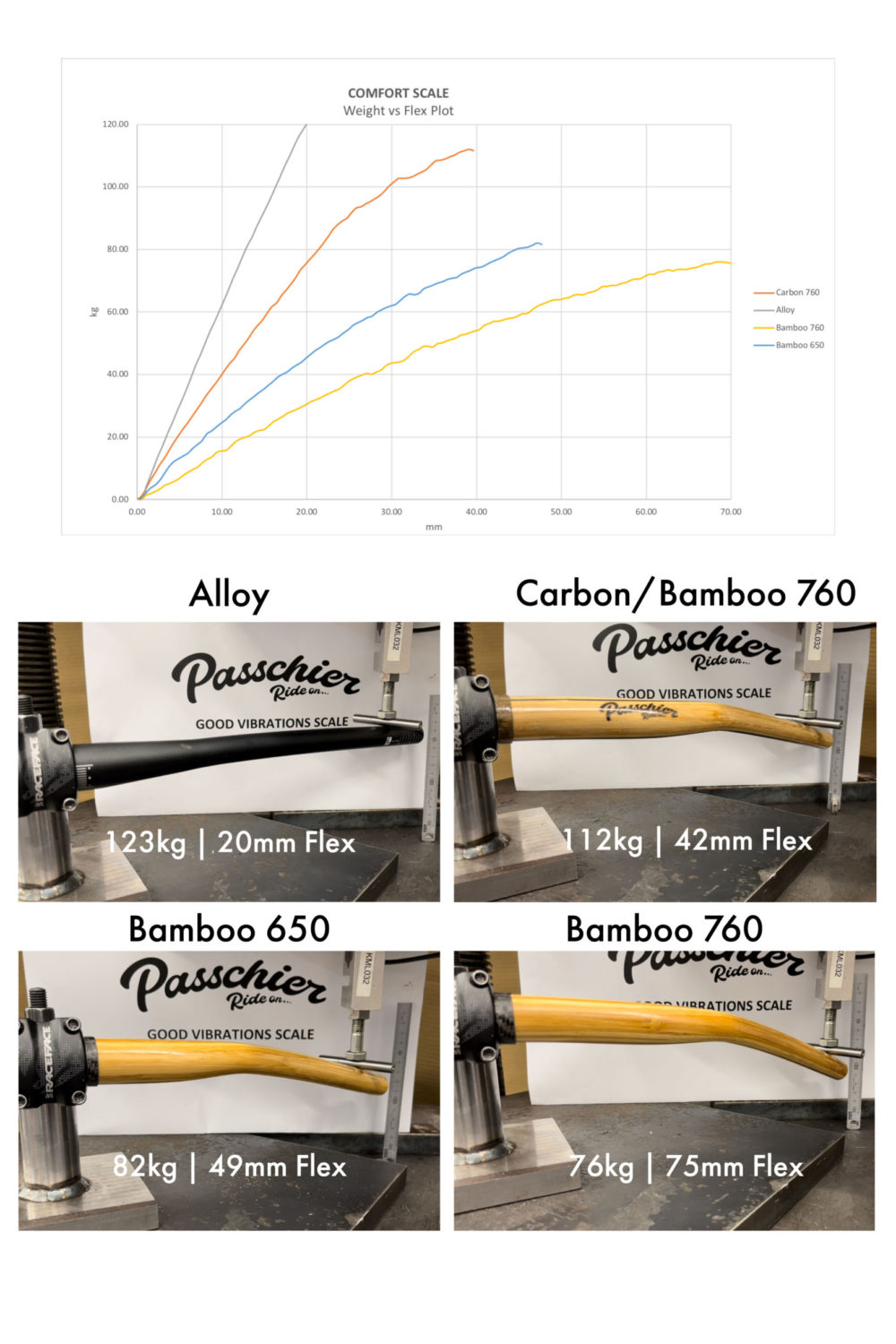Comfort
Bike enthusiasts will all know the feeling of hand numbness, weakness, tingling and discomfort, formally known as hand-arm vibration syndrome or handlebar palsy.
These symptoms are extremely common on long or bumpy rides and not only take away from the enjoyment of the outing but leave the rider with lasting effects that if not addressed quickly can lead to ongoing wrist, hand, and muscular issues.

We’ve engineered the natural flex of bamboo to create unsurpassed vibration reduction, ridding your muscles of that stiff and sore tingling that ruins a good ride and protecting your wrists for a long career behind your bars.
There’s as much show as go with Passchier’s, and feeling is believing – you won’t believe it compared to those stiff old alloy bars until you feel for yourself, and you’ll be left asking the question – why wasn’t this a thing sooner?
Extensive qualitative and quantitative research has shown that Passchier bars absorb vibration and create a riding experience like no other.

The difference between alloy bars and Passchier Gumps will change the way you ride.
Along rough terrain the Gumps absorb the rattle with no compromise of control, while the alloy send every shock from the environment through the wrists and arms resulting in hand-arm vibration syndrome, or what avid riders recognize as
numbness, weakness, tingling and discomfort.
Comments from riders consistently back this up, saying they’re so comfortable, make a huge improvement to their riding experience,
massively reduce muscle discomfort and save their hands and wrists, allowing them to ride longer.

This is reinforced by objective measurements we’ve taken using an accelerometer, allowing us to compare the vibration of Passchier bars compared to alloy bars across any terrain, showing a significant improvement and vibration absorbtion with Passchiers.
The Good Vibrations Scale

The adjacent graph shows the Good Vibrations Comfort Scale, delivering a good visual of how the comfort of Passchier works in a technical sense.
This weight vs. flex plot demonstrates how much weight is exerted on one end of each bar, to produce the related amount of flex –
What is most interesting about this graph is the vibrational nature of the three Passchier plots, as opposed to the rigidness of the alloy plot.
The undulation of the Passchier bar lines shows the bar absorbing the stress of the exerted force, while the rigidity of the alloy bar line, shows very little, if any, absorption of force, which would instead be transferred through the riders hands putting stress and discomfort on their body.
Note that when an actual rider puts weight on any handlebar, it is distributed across both sides of the bar rather than just one end, and it does not tend to be their entire weight.
This large amount of weight exerted onto one end of each bar is to demonstrate the amount of flex and correlating comfort that each bar is able to produce – do not be alarmed at the large degrees of flex, it wont look quite like this when you’re actually riding!



